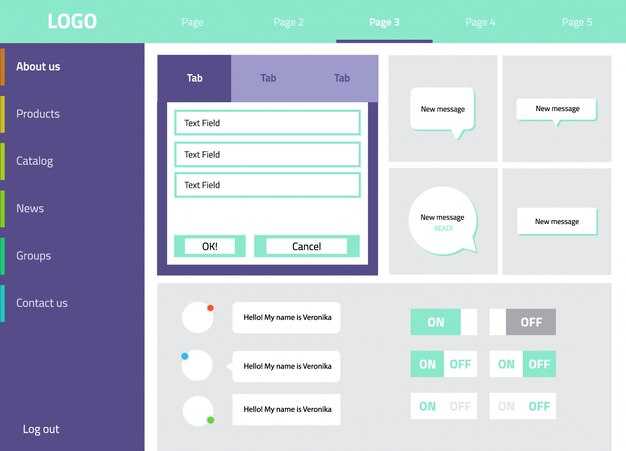Week 1–2: create a behaviour inventory with indicators you can measure – list 10 enabling actions (money transfers, rescue calls, excuses made) and rate frequency 0–5 each day. Track mood with PHQ-9 and GAD-7 scores; if depresión o ansiedad exceed moderate cut-offs (PHQ‑9 ≥10, GAD‑7 ≥10), arrange a clinician appointment within 14 days. Record who you rely on and why; identify at least three objective harms that show detriment to your life (missed work, relational conflict, financial loss).
Therapeutic route: schedule a targeted 12‑session CBT block focused on boundary skills and role rehearsal. In the british context, check IAPT waiting times (average 4–8 weeks) and compare private sessions (£50–£120) against low‑cost group options. Use staged practice on a local stage or with a support person to rehearse saying “no” aloud; record sessions and rate confidence from 1–10 to measure overcoming avoidance. Meet with a coach or peer weekly for accountability; small, measurable wins (three uninterrupted evenings per month) predict sustainable change.
Operational rules to stop enabling: freeze automatic payments for 30 days, set a 72‑hour “no rescue” hold for crises that are not life‑threatening, and require written plans before offering help again. Use clear scripts for conversations and rehearse them until they are automatic. Remove access to shared financial tools and limit in‑person assistance to negotiated tasks only. If you notice persistent guilt or compulsion to intervene, treat that as an indicator to intensify boundary work.
Address emotional barriers compassionately: practice a five‑minute grounding routine before responding to requests, label emotions without solving them, and journal outcomes weekly. Measure progress with three metrics–contact frequency, PHQ‑9/GAD‑7 scores, and subjective fulfilment rating–and adjust rules when data show reduction in harm. You cannot fix everything at once; prioritise actions that restore autonomy and create measurable steps toward practical freedom while protecting mental health.
Recognize and Map Your Codependent Patterns
Track 30 days of interactions: log date, who was involved, specific behavior, trigger, immediate response, emotional intensity (1–10) and outcome; this single dataset will bring clarity on frequency and consequence.
Create a simple worksheet with columns: person (partner, family members, friend), context, actions you took, actions they took, sources of belief about responsibility, moments of seeking approval, and who took the blame. Mark each row for whether the action made you feel more or less loved.
Quantify patterns: count occurrences, calculate percentage of interactions where you prioritized them over yourself, and highlight the top three repeating patterns – most common pattern, second, third. Use a 1–5 scale to rate how worrying each pattern is and set a threshold for change (e.g., reduce “people-pleasing” incidents by 50% in 8 weeks).
Adopt targeted interventions: during conflict, practice one 30-second script to express need without assigning blame (example: “I feel X when Y happens; I need Z”); schedule two weekly self-care blocks and one accountability check with a committed friend or therapist to increase follow-through. Role-play responses with a trusted friend to make new responses effective before using them with family members.
Addressing underlying sources: map beliefs to sources (childhood rules, cultural messages, partner expectations) and write one counter-evidence statement per belief. Choose measurable goals tied to behavior change (number of boundary assertions per week, minutes spent on self-care) and log progress to support development of autonomy.
Shift relational dynamics toward equality by communicating limits calmly, naming needs, and inviting mutual goal-setting; remind yourself that progress isnt linear, that individuals change at different rates, and that regular review of the map will reveal which adjustments bring the most durable results.
Identify specific people-pleasing triggers in everyday situations
Set a daily 10-minute log: record each time you say yes when you want to say no – note date, context, who asked, the источник of pressure, what you actually replied, and a 1–10 intensity for emotions and urge to please.
Track concrete triggers: email subject lines with “urgent”, someone asking favors during your work block, compliments that precede requests, threats to a romantic relationship or friendships, appeals about a child, requests tied to someone’s substance use, and social invitations framed as exclusion if you decline.
Identify patterns in the process: calculate percent of unsolicited obligations you accept each week, list the top three requesters, and mark whether the response was motivated by guilt, fear of conflict, desire to be perceived as right, or habit. Label repetitive cycles and the dysfunctional behaviours that maintain them.
Use three practical interventions: (1) a 10-second pause script – “I need to check my schedule” – to create distance; (2) two prepared boundary phrases – “I can’t take that on right now” and “That doesn’t work for me”; (3) a debrief question after any concession – “What did I sacrifice and was it valuable?”
Map relationship-specific triggers: in romantic dynamics, note when apologies are demanded for minor issues; in friendships, flag when support requests always occur at your expense; with family, watch for childhood roles that push you to rescue or placate a child or parent. Mark whether anyone uses praise, threats, or shame to influence you.
Set measurable goals and supports: reduce automatic yes responses by 30% in four weeks, practice asserting one boundary daily, and pursue autonomous decision-making exercises. If cycles persist, consult licensed counsellors or coaching professionals; combine short-term coaching with referrals to counsellors when trauma or substance issues complicate emotions and behaviours.
Track moments when you abandon personal needs for others
Keep a 14-day log: every time you give up a personal need, record date/time, need type (sleep, work, social), who benefited (someone, friend, colleague), whether the action was necessary, the immediate consequence, and alternative actions you could have taken. Create columns titled Need, Trigger, Behavior, Thought, Outcome and Next Step so you can identify patterns objectively; if entries occur frequently (for example 8+ times in 14 days) set a meeting with yourself or a practitioner to adjust strategies.
Prepare short, repeatable scripts to communicate boundaries and practice them aloud. Example message: “I can’t take that on right now; I need X.” Roleplay that message in workshops or with a friend to lower anxiety about disapproval. Before and after each interaction rate your anxiety and clarity (0–10) and note what thought prompted the yes; this raises awareness and shows whether scripts reduce automatic compliance.
Use the log during therapy sessions for data-driven work: bring specific entries for addressing recurring triggers and behavior patterns from adolescence into adulthood. Set measurable objectives (reduce surrender episodes from X to Y per month) and plan coordination of responsibilities so someone else covers tasks you decline; assign names, days and fallback plans for conflicts that typically require negotiation.
Review the log weekly while adjusting phrasing and timing: mark interactions that led to conflicts versus those resolved with a brief message, and track frequency of experienced disapproval. Cultivate a habit of replacing automatic yes with a one-sentence delay line (“Let me check my schedule and get back to you”) to buy time for necessary reflection and coordination.
List recurring relationship roles you adopt (rescuer, enabler, caretaker)
Limit unsolicited interventions to two 30-minute sessions per week and tell the other person clearly: “I can help for 30 minutes, then I need to stop.” This rule reduces excessive rescue behaviors, protects your time, prevents burn-out, and makes expectations understood by someone who relies on you.
Recognising role patterns: score yourself on a 10-item checklist – give 1 point for each true item: (1) you take responsibility for others’ problems, (2) you finish tasks others avoid, (3) you feel guilty saying no, (4) you smooth consequences, (5) you provide emotional labor constantly, (6) caregivers in your family modeled this, (7) you rescue to feel valued, (8) you avoid conflict by overinvolvement, (9) you step in when someone is experiencing failure, (10) you prioritize others’ needs over your own. A score ≥6 signals entrenched rescuer/enabler/caretaker tendencies that require planned change.
Create three micro-scripts to use in real moments: for rescuer – “I can support you if you ask; I won’t remove consequences”; for enabler – “I will not cover finances you can manage; I’ll help find resources instead”; for caretaker – “I will check in at 8pm but I expect you to attempt it first.” Deliver these with neutral tone and consistent follow-through; kindness can remain while you stop taking on others’ responsibility.
Apply a 30/60/90-day plan: 30 days – track every help instance and note who initiated it; 60 days – reduce unsolicited help by 50% and rehearse boundary scripts twice daily; 90 days – test a behavioral experiment (e.g., withdraw help for one recurring task and record outcomes). Use calendars and simple metrics (number of interventions, hours saved, mood rating). Research on family dynamics and coaching indicates structured practice reduces caregiver stress and lowers rates of depression among overinvolved helpers.
Address origins and supports: think about whether patterns began in school or family roles where caregivers were consistently involved; map attachment styles and specific triggers. If someone struggles with substance use, mental health, or chronic dependence, refer them to professionals rather than rescuing. If committed to change, seek coaching or therapy, focus on measurable goals, list things you will stop doing, and rehearse saying no until new behaviors are understood by both you and the person who relies on you.
Use a simple mood-and-behavior log to spot patterns
Begin a one-page daily log with five columns: time, mood (1–10), behavior, trigger (call, message, presence, financial), short note on intent (seeking reassurance, avoiding, asserting).
- Frequency: record entries immediately after interactions that matter; aim for 3–6 entries per day or every time you feel a mood swing.
- Concrete labels: use tags you can count – “engages” (reaches out), “withdraws”, “people-pleases”, “says no”, “relies”.
- Examples of triggers to mark: missed call, long message, request for financial help, asked to give space, a caregiver visit.
- If mood drops ≥2 points after a call or message, mark it as a reactive event; flag patterns where mood resets only after reassurance.
Track for 14 days and then analyze counts and percentages:
- Calculate proportion of entries characterized by reassurance-seeking versus independent action; if >40% were reassurance-seeking, note this as a target pattern.
- Chart mood before and after interactions across the two-week window to see where dips cluster.
- Marcar las entradas que mencionen depender de otros cuando se tiene miedo; enumerar las circunstancias en las que esto depende de la otra persona (pareja, padre/madre, cuidadores).
Utilice estos umbrales y acciones concretos:
- Si las interacciones iniciadas por llamadas o mensajes reducen tu estado de ánimo en 50%+ de entradas, implementa una regla de “retraso de 30 minutos” en las respuestas no urgentes durante una semana y registra los cambios.
- Si las consultas financieras coinciden con la ansiedad en las entradas 30%+, establece un límite semanal fijo y practica diciendo una respuesta preparada; mide el progreso contando los días de cumplimiento.
- Si notas un sacrificio repetido de los intereses personales, programa dos bloques de 45 minutos por semana etiquetados como “espacio protegido” y registra si los mantienes; apunta a una adherencia de 75% después de 4 semanas.
Plantilla rápida a continuación para cada línea: “HH:MM | Estado de ánimo 1–10 | Etiqueta de comportamiento | Desencadenante (llamada/mensaje/financiero/otro) | Nota (por qué actué)”.
- Usar sumas simples: número total de entradas, número en el que el estado de ánimo disminuyó, número en el que la persona se involucra en tranquilizar – convertir a porcentajes para comparar semanas.
- Comparte una copia con un terapeuta o una persona de confianza; pídeles que lean solo patrones (no detalles) para aumentar la autoconciencia.
- Aunque un registro es privado, marcar dónde los cuidadores o las normas culturales (por ejemplo, las expectativas familiares británicas) influyeron en una reacción puede aclarar los orígenes de los patrones.
Seguimientos e ideas prácticas:
- Establece un micro-objetivo medible por semana (p. ej., decir que no una vez, mantener una sesión de espacio protegido) y registra el progreso en el diario.
- Cuando veas los patrones claramente, realiza una lluvia de ideas de 3 respuestas alternativas para el detonante más común y prueba una cada semana.
- Revisar nuevamente después de 4 semanas: si la dependencia de los demás cuando se tiene miedo disminuyó en al menos 20 puntos porcentuales, mantenga los mismos métodos; si no, ajuste el tiempo o el apoyo.
Establece Límites y Practica la Comunicación Asertiva
Declare inmediatamente un límite claro y medible que hará cumplir hoy: “Responderé correos electrónicos de 9:00 a 17:00; los mensajes recibidos fuera de esas horas se atenderán el próximo día laborable.”
Listar relaciones por tipo (supervisores, cuidadores, amistades, parejas enmarañadas) y asignar un límite por persona: un límite de tiempo, un límite de tareas o un límite emocional. Tener en cuenta las expectativas culturales: diferentes culturas esperan diferentes niveles de proximidad y disponibilidad: luego, elegir el límite que protege tu tiempo sin descartar las normas de los demás.
Usa declaraciones concisas en primera persona y compromisos cronometrados: di lo que harás, cuándo, y lo que no harás. Ejemplo de fórmula: “Puedo hacer X durante Y minutos hoy; no puedo hacer Z ahora, pero puedo ayudar el martes”. Practica en voz alta hasta que el tono suene firme pero compasivo. Realiza simulacros con un amigo de confianza o un terapeuta para simular respuestas incómodas.
Evite asumir motivos o ofrecer largas defensas. Si alguien te acusa de negligencia, haz una pregunta para aclarar, luego reformula tu límite: “Ayúdame a entender qué parte se siente descuidada; programaré 30 minutos mañana para enfocarme en eso”. Esto invita a la comprensión al tiempo que mantiene el límite.
| Situación | Boundary | Frase asertiva | Acción de seguimiento |
|---|---|---|---|
| El supervisor solicita trabajo adicional después de horas | Responda solo durante las horas de trabajo establecidas | “I can complete this tomorrow between 9–11; outside those hours I am offline.” | Enviar una invitación al calendario para la hora acordada; solicitud de documentación |
| El cuidador pide repetidamente los mismos favores | Limitar la frecuencia a dos veces por semana | Puedo ayudar los miércoles y sábados; no puedo asistir otros días sin previo aviso.” | Ofrecer recursos comunitarios o apoyo programado; involucrar a otros miembros de la familia |
| Amigo espera disponibilidad constante | Establecer bloques sin teléfono para actividades personales | Valoro nuestra amistad; necesito dos horas nocturnas fuera de línea para mis actividades. | Planifica reuniones periódicas para que no se sientan descuidados. |
| Pareja entrelazada pide cancelar planes. | Proteger el tiempo social fuera | Asistiré al evento de esta noche; no puedo cancelar debido a la presión de última hora. | Debrief posterior con retroalimentación enmarcada con compasión |
Cuando escuches resistencia, mantente firme: respira, repite el límite una vez, luego aplica la consecuencia con calma. Las consecuencias son simples: termina la llamada, cierra la computadora portátil, deja la habitación. Realiza un seguimiento de los resultados semanalmente para medir la creciente confianza y para buscar patrones en las relaciones que requieren límites más fuertes.
Practicar la formulación para la incomodidad: “Me siento abrumado/a y necesito 24 horas antes de decidir”. Utiliza esto para solicitudes que llegan cuando estás estresado/a o asumiendo que debes cumplir. Esto crea espacio sin sacrificio y modela un comportamiento asertivo que otros pueden escuchar y replicar.
Crea un script de límite corto para interacciones comunes
Recommendation: Utilice un guion de 15 a 25 segundos que indique el límite, la razón concreta y una alternativa clara; mantenga un tono neutral y practique hasta que la entrega se sienta natural.
Solicitud de favor (amigo/familiar): “No puedo asumir esto ahora mismo; estoy mejorando mi agenda para evitar el agotamiento. Puedo ayudar el sábado o sugerir a otra persona.” Orientación: nombre el problema, ofrezca una fecha o una referencia, evite explicarse demasiado para que la otra persona escuche el límite, no una disculpa.
Emotional dumping: “Te escucho y quiero apoyarte, pero puedo participar durante 10 minutos ahora y luego pausar para poder mantenerme presente. Si necesitas más, programemos un tiempo.” Usa tus frases de esta manera para expresar cuidado mientras proteges tu capacidad; establece un tiempo límite para prevenir el atrapamiento.
Interrupciones en la conversación: “Por favor, déjame terminar este punto; escucharé tu idea a continuación”. Breve, firme, repite una vez si el patrón continúa. Esto rompe los patrones repetitivos de ser interrumpido y ayuda a desarrollar un intercambio equilibrado.”
Sobrecarga de trabajo / Ampliación del alcance: “Esa solicitud excede mis prioridades actuales; puedo entregar para el viernes si renunciamos a X, o puede asignar recursos adicionales”. Utilice números y plazos para transformar las demandas vagas en parámetros negociables; esto reduce el abandono de sus tareas principales.”
Consejos o críticas no solicitados: Agradezco que compartas esa perspectiva, pero prefiero decidir esto por mí mismo. (Si es necesario, una breve razón). Esto expresa tu límite sin invitar al debate y te da licencia para elegir.
Necesidad de tiempo a solas / espacio personal: “Necesito una hora para recargar energías; estaré disponible a las 6pm.” Indica la duración y la hora de regreso para que la otra persona sepa que volverás a interactuar; esa claridad previene malentendidos y la apariencia de rechazo.
Practice strategies: Role-play short scripts with someone who supports you, record yourself to track tone, and refine language until it feels authentic. Use written prompts above your workspace so you can deploy scripts quickly. Notice growing confidence as you repeat them; small changes accumulate into change of patterns that improve fulfillment.
Practice “I” statements to state needs without blame

Use the four-part “I” statement formula: specific observation → feeling word → personal need → concrete request.
-
Observation (be measurable): Describe behavior through an objective detail: “When you arrive 30+ minutes late without notice…” Avoid vague phrases such as “always” or “never”; note time, date or frequency instead.
-
Feeling (single word): Name one feeling: anxious, frustrated, relieved, exhausted. Example: “I feel anxious.”
-
Need (personal, neutral): State the need that follows the feeling: “I need reliability,” “I need uninterrupted sleep.” Use “personal” to keep it about your internal state rather than their fault.
-
Request (behavior + timeframe): Ask for a specific action and deadline: “Would you text me if you’re more than 10 minutes late?” or “Can we pause this conversation for 20 minutes and resume at 9am so I can get sleep?”
- Scripts to use: “When X happened, I felt Y; I need Z. Can you do A by tomorrow/this week?” Keep requests binary and observable (text, arrive, call).
- Example for night arguments: “When we argue after 11pm, I’m losing sleep; I need rest. Can we table disputes until morning and schedule 20 minutes to discuss?”
- If theyre defensive, say: “I want to be heard; I’ll restate my need and then listen to yours.” This prevents escalation and reduces the blame dynamic.
Practice schedule to develop skill:
- Journal 5 minutes each evening: record 3 situations and write one I-statement for each.
- Role-play twice weekly with a trusted friend or therapist to engage realistic responses from both parties.
- Build a script directory on your phone with 10 go-to statements; review and refine consistently for 8 weeks.
How to measure progress:
- Track relationship conflicts per week in your journal; set a goal to reduce repeated conflicts by 50% over 8 weeks by using I-statements instead of accusations.
- Log responses: note which requests were accepted, partially accepted, or refused; bring that data to couple meetings or therapy.
Boundaries and escalation plan:
- Establish a short-timeout rule: if a conversation escalates, call a 20–30 minute break; resume with an I-statement each party uses first.
- Avoid power moves or playing the blame game; cultivate respect by acknowledging the other person’s need after you express yours.
Maintenance and application:
- Consistently use I-statements through routine interactions (household tasks, finances, parenting) to prevent buildup of resentments.
- Bring I-statements into group settings and parties when boundaries are crossed: keep requests brief and behavior-focused.
- Develop a personal plan that requires weekly practice, journaling, and periodic review of the script directory to maintain freedom to express needs without hostility.
Practical tips: rehearse aloud, time requests (e.g., “by Friday”), avoid moral judgments, and track sleep and stress changes as objective signals that the method is working.


 Superar la Codependencia – Consejos Prácticos para Liberarse">
Superar la Codependencia – Consejos Prácticos para Liberarse">

 Discurso Motivacional de Matthew McConaughey – Transcripción Completa y Citas Clave">
Discurso Motivacional de Matthew McConaughey – Transcripción Completa y Citas Clave">
 Hombres atractivos en ‘Pretty Privilege’ para hombres – Entrevistas, perspectivas e interpretaciones">
Hombres atractivos en ‘Pretty Privilege’ para hombres – Entrevistas, perspectivas e interpretaciones">
 11 Señales de Alerta en Aplicaciones de Citas Que Significa Que Es Hora de Deslizar a la Izquierda">
11 Señales de Alerta en Aplicaciones de Citas Que Significa Que Es Hora de Deslizar a la Izquierda">
 Él No Está Listo para una Relación – ¿Debería Esperar o Seguir Adelante? | Consejos de Citas de un Experto">
Él No Está Listo para una Relación – ¿Debería Esperar o Seguir Adelante? | Consejos de Citas de un Experto">
 NowUKnow – Por Qué Los Millennials Se Niegan a Casarse — Razones Clave y Tendencias Sociales">
NowUKnow – Por Qué Los Millennials Se Niegan a Casarse — Razones Clave y Tendencias Sociales">
 Ventana de diálogo – Diseño de la interfaz de usuario, ejemplos y las mejores prácticas de accesibilidad">
Ventana de diálogo – Diseño de la interfaz de usuario, ejemplos y las mejores prácticas de accesibilidad">
 Por qué los hombres no hacen preguntas: Guía para una mujer soltera">
Por qué los hombres no hacen preguntas: Guía para una mujer soltera">
 Por qué la gente se comporta mal en las aplicaciones de citas – Causas, Psicología y Soluciones">
Por qué la gente se comporta mal en las aplicaciones de citas – Causas, Psicología y Soluciones">
![3 Mensajes Efectivos para Enviar a una Mujer Sin Bio en una App de CitasHave you ever stumbled upon a profile on a dating app that's… sparse? Like, really sparse? No bio, maybe a couple of pictures, and you're left wondering, “Is this a bot? A ghost? Or just someone who believes in letting their pictures do the talking?”While a lack of information can be intriguing (a mystery!), it can also be a hurdle when it comes to sparking a connection. You don't have much to work with, so you need to be creative and strategic with your opening message.Here are 3 effective messages to send a woman with no bio on a dating app, along with explanations of why they work:**1. The Observational Opener**This approach focuses on something you *did* notice about her profile – her photos. It shows you paid attention and allows you to start a conversation based on shared interests or a vibe you picked up.*Example:* "Hey! Love the [location in one of her photos]. Been there myself! What’s your favorite thing to do in [location]?”*Why it works:* It's low-pressure, shows you’re observant, and provides an easy conversation starter.**2. The Playful Curiosity Approach**If you’re feeling a bit bolder, you can lean into the lack of information with a playful question. This shows you're not afraid to be a little cheeky and invites her to share something about herself.*Example:* "No bio, huh? Clearly, you're a woman of secrets. 😉 What’s one thing you’re surprisingly good at?”*Why it works:* It’s lighthearted, breaks the ice, and demonstrates a sense of humor.**3. The Direct & Engaging Question**Sometimes, simplicity is key. Ask an open-ended question that encourages her to elaborate and reveals a bit about her personality.*Example:* "What's one thing that's made you smile today?”*Why it works:* It’s easy to answer, positive, and can lead to a genuine connection.**Important Considerations:*** **Profile Pictures:** Really analyze her pictures. Look for clues about her interests, hobbies, or travel destinations. This can provide valuable conversation starters.* **Be Respectful:** Even if she has a minimal profile, treat her with respect and avoid making assumptions or being overly forward.* **Don’t Be Discouraged:** It might take a few tries to get a response. Not everyone is active on dating apps or feels comfortable sharing a lot of information upfront.Ultimately, the best message is one that is genuine, engaging, and shows you’ve taken the time to look at her profile (even if it's brief!). Good luck! 3 Mensajes Efectivos para Enviar a una Mujer Sin Bio en una App de CitasHave you ever stumbled upon a profile on a dating app that's… sparse? Like, really sparse? No bio, maybe a couple of pictures, and you're left wondering, “Is this a bot? A ghost? Or just someone who believes in letting their pictures do the talking?”While a lack of information can be intriguing (a mystery!), it can also be a hurdle when it comes to sparking a connection. You don't have much to work with, so you need to be creative and strategic with your opening message.Here are 3 effective messages to send a woman with no bio on a dating app, along with explanations of why they work:**1. The Observational Opener**This approach focuses on something you *did* notice about her profile – her photos. It shows you paid attention and allows you to start a conversation based on shared interests or a vibe you picked up.*Example:* "Hey! Love the [location in one of her photos]. Been there myself! What’s your favorite thing to do in [location]?”*Why it works:* It's low-pressure, shows you’re observant, and provides an easy conversation starter.**2. The Playful Curiosity Approach**If you’re feeling a bit bolder, you can lean into the lack of information with a playful question. This shows you're not afraid to be a little cheeky and invites her to share something about herself.*Example:* "No bio, huh? Clearly, you're a woman of secrets. 😉 What’s one thing you’re surprisingly good at?”*Why it works:* It’s lighthearted, breaks the ice, and demonstrates a sense of humor.**3. The Direct & Engaging Question**Sometimes, simplicity is key. Ask an open-ended question that encourages her to elaborate and reveals a bit about her personality.*Example:* "What's one thing that's made you smile today?”*Why it works:* It’s easy to answer, positive, and can lead to a genuine connection.**Important Considerations:*** **Profile Pictures:** Really analyze her pictures. Look for clues about her interests, hobbies, or travel destinations. This can provide valuable conversation starters.* **Be Respectful:** Even if she has a minimal profile, treat her with respect and avoid making assumptions or being overly forward.* **Don’t Be Discouraged:** It might take a few tries to get a response. Not everyone is active on dating apps or feels comfortable sharing a lot of information upfront.Ultimately, the best message is one that is genuine, engaging, and shows you’ve taken the time to look at her profile (even if it's brief!). Good luck!](https://soulmatcher.app/wp-content/images/3-effective-messages-to-send-a-woman-with-no-bio-on-a-dating-app.jpg) 3 Mensajes Efectivos para Enviar a una Mujer Sin Bio en una App de Citas
Have you ever stumbled upon a profile on a dating app that's… sparse? Like, really sparse? No bio, maybe a couple of pictures, and you're left wondering, “Is this a bot? A ghost? Or just someone who believes in letting their pictures do the talking?”
While a lack of information can be intriguing (a mystery!), it can also be a hurdle when it comes to sparking a connection. You don't have much to work with, so you need to be creative and strategic with your opening message.
Here are 3 effective messages to send a woman with no bio on a dating app, along with explanations of why they work:
**1. The Observational Opener**
This approach focuses on something you *did* notice about her profile – her photos. It shows you paid attention and allows you to start a conversation based on shared interests or a vibe you picked up.
*Example:* "Hey! Love the [location in one of her photos]. Been there myself! What’s your favorite thing to do in [location]?”
*Why it works:* It's low-pressure, shows you’re observant, and provides an easy conversation starter.
**2. The Playful Curiosity Approach**
If you’re feeling a bit bolder, you can lean into the lack of information with a playful question. This shows you're not afraid to be a little cheeky and invites her to share something about herself.
*Example:* "No bio, huh? Clearly, you're a woman of secrets. 😉 What’s one thing you’re surprisingly good at?”
*Why it works:* It’s lighthearted, breaks the ice, and demonstrates a sense of humor.
**3. The Direct & Engaging Question**
Sometimes, simplicity is key. Ask an open-ended question that encourages her to elaborate and reveals a bit about her personality.
*Example:* "What's one thing that's made you smile today?”
*Why it works:* It’s easy to answer, positive, and can lead to a genuine connection.
**Important Considerations:**
* **Profile Pictures:** Really analyze her pictures. Look for clues about her interests, hobbies, or travel destinations. This can provide valuable conversation starters.
* **Be Respectful:** Even if she has a minimal profile, treat her with respect and avoid making assumptions or being overly forward.
* **Don’t Be Discouraged:** It might take a few tries to get a response. Not everyone is active on dating apps or feels comfortable sharing a lot of information upfront.
Ultimately, the best message is one that is genuine, engaging, and shows you’ve taken the time to look at her profile (even if it's brief!). Good luck!">
3 Mensajes Efectivos para Enviar a una Mujer Sin Bio en una App de Citas
Have you ever stumbled upon a profile on a dating app that's… sparse? Like, really sparse? No bio, maybe a couple of pictures, and you're left wondering, “Is this a bot? A ghost? Or just someone who believes in letting their pictures do the talking?”
While a lack of information can be intriguing (a mystery!), it can also be a hurdle when it comes to sparking a connection. You don't have much to work with, so you need to be creative and strategic with your opening message.
Here are 3 effective messages to send a woman with no bio on a dating app, along with explanations of why they work:
**1. The Observational Opener**
This approach focuses on something you *did* notice about her profile – her photos. It shows you paid attention and allows you to start a conversation based on shared interests or a vibe you picked up.
*Example:* "Hey! Love the [location in one of her photos]. Been there myself! What’s your favorite thing to do in [location]?”
*Why it works:* It's low-pressure, shows you’re observant, and provides an easy conversation starter.
**2. The Playful Curiosity Approach**
If you’re feeling a bit bolder, you can lean into the lack of information with a playful question. This shows you're not afraid to be a little cheeky and invites her to share something about herself.
*Example:* "No bio, huh? Clearly, you're a woman of secrets. 😉 What’s one thing you’re surprisingly good at?”
*Why it works:* It’s lighthearted, breaks the ice, and demonstrates a sense of humor.
**3. The Direct & Engaging Question**
Sometimes, simplicity is key. Ask an open-ended question that encourages her to elaborate and reveals a bit about her personality.
*Example:* "What's one thing that's made you smile today?”
*Why it works:* It’s easy to answer, positive, and can lead to a genuine connection.
**Important Considerations:**
* **Profile Pictures:** Really analyze her pictures. Look for clues about her interests, hobbies, or travel destinations. This can provide valuable conversation starters.
* **Be Respectful:** Even if she has a minimal profile, treat her with respect and avoid making assumptions or being overly forward.
* **Don’t Be Discouraged:** It might take a few tries to get a response. Not everyone is active on dating apps or feels comfortable sharing a lot of information upfront.
Ultimately, the best message is one that is genuine, engaging, and shows you’ve taken the time to look at her profile (even if it's brief!). Good luck!">
 8 Razones por las que Algunas Mujeres No Quieren Intimidad Física — Causas, Señales y Qué Ayuda">
8 Razones por las que Algunas Mujeres No Quieren Intimidad Física — Causas, Señales y Qué Ayuda">